An Excursion into the History of the Newry and Warrenpoint Railway

Inside front cover: Andrew Domleo aged 13, pictured in 1964 on the footplate of No.66 with engine driver, Jack Black.
Courtesy
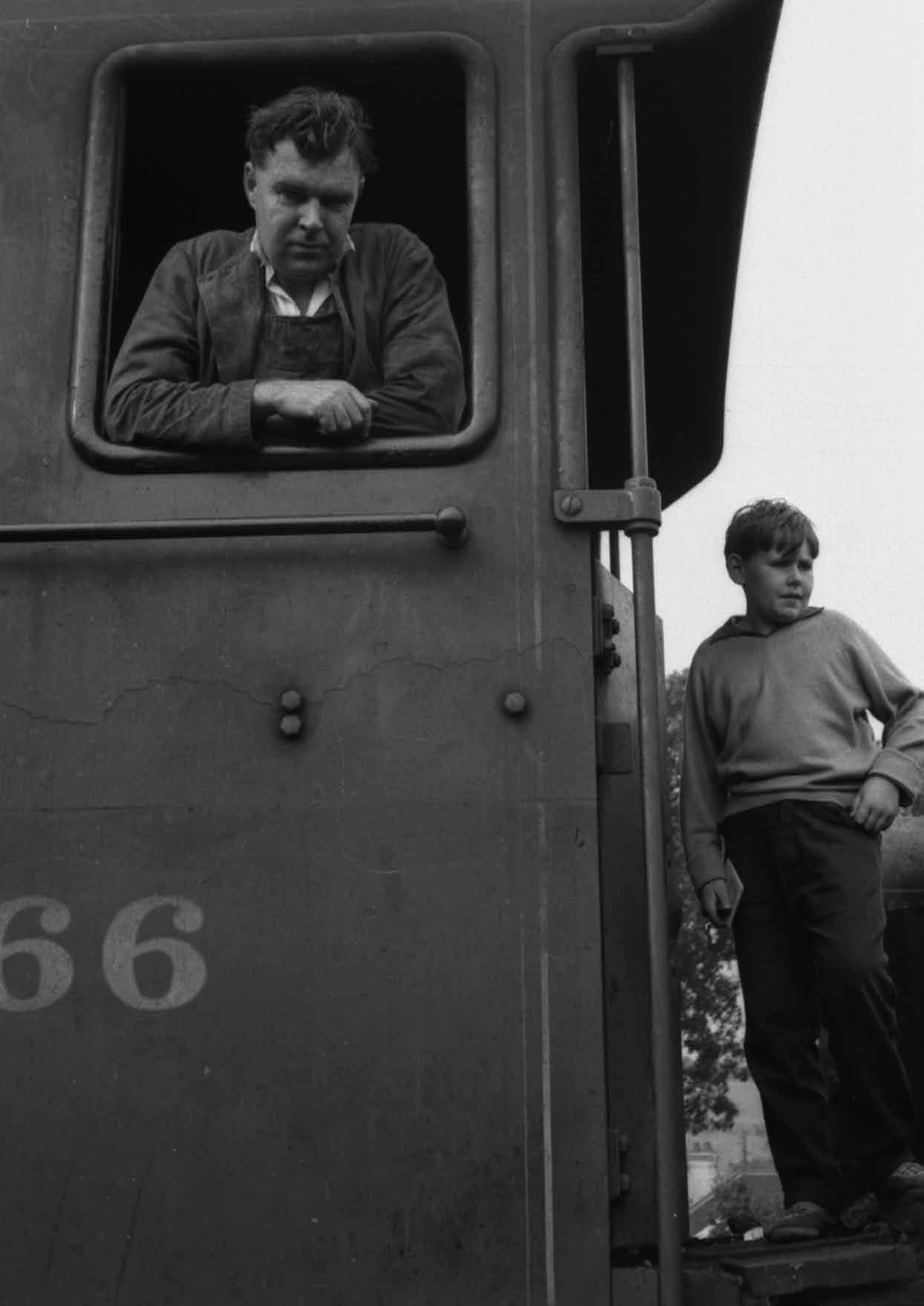 Cover: Goods train at Warrenpoint Railway Station c. 1964.
Courtesy of A. & B. Domleo
of A. & B. Domleo
Cover: Goods train at Warrenpoint Railway Station c. 1964.
Courtesy of A. & B. Domleo
of A. & B. Domleo
Chairperson’s Foreword
I am delighted to write the foreword to this exhibition catalogue, which accompanies An Excursion into the History of the Newry and Warrenpoint Railway, a temporary exhibition at Newry and Mourne Museum.
Opened in May 1849 and originally known as the Newry, Warrenpoint and Rostrevor Railway, the rail link between Newry and Warrenpoint operated for around 150 years. During those years, it was instrumental in the growth and development of Warrenpoint and Rostrevor as popular tourist destinations for holidaymakers and day-trippers alike. Many local people also found the line to be a convenient mode of transport for commuting between Newry and Warrenpoint.
This exhibition charts the history of the railway line and memories will be stimulated for many people by the range of objects, documents and photographs on display. Many of these were collected around the time of the closure of the line in 1965 by two brothers, Andrew and Barrie Domleo, who, as teenagers, regularly visited from England, their grandparents in Warrenpoint.
The Domleo brothers have generously donated this fascinating material to Newry and Mourne Museum and, on behalf of the Museum; I would like to thank them for making such an important contribution to the preservation of the railway heritage of the local area.
Councillor Mark Murnin Chair of Newry, Mourne and Down District Council
Réamhrá an Chathaoirligh
Is mór an pleisiúr domh réamhrá a scríobh don chatalóg a théann leis an taispeántas sealadach Turas i Stair Iarnród an Iúir agus an Phointe, in Iarsmalann an Iúir agus Mhúrn.
Osclaíodh an nasc idir an tIúr agus an Pointe i Mí na Bealtaine 1849, agus tugadh Iarnród an Iúir, an Phointe agus Ros Treabhair air ar an chéad dul síos agus bhí sé ag feidhmiú thart ar 150 bliain. Le linn an tréimhse sin ba é an iarnród a bhí freagrach as fás agus forbairt an Phointe agus Ros Treabhair mar cheann scríbe do thurasóirí idir daoine ar saoire agus turasóirí lae. Bhí an líne seo an-aisiúil do mhuintir na háite mar mhodh iompair eile idir Iúr Cinn Trá agus an Pointe. Leiríonn an taispeántas seo stair an iarnróid agus dúiseofar cuimhní cinn i gcuid mhór daoine leis an raon d’ábhair, dhoiciméid agus ghrianghraif ar taispeáint. Bhailigh beirt dheartháireacha Andrew agus Barrie Domleo ó Shasain cuid mhór acu nuair a druideadh an líne sa bhliain 1965 agus iad ina ndéagóirí, thug an bheirt acu cuairteanna ar a seantuistí sa Phointe.
Bhronn na deartháireacha Domleo na hábhair suimiúla seo ar Iarsmalann an Iúir agus Mhúrn agus thar ceannn na hIarsmalainne ba mhaith liom mo bhuíochas a ghabháil leo as na deochnacháin tábhachtacha seo do chaomhnú oidhreacht an iarnróid sa cheantar máguaird seo.
An Comhairleoir Marcas Ó Murnáin Cathaoirleach Chomhairle Ceantair an Iúir, Mhúrn agus an Dúin
Part A – Historical Introduction
Noreen Cunningham and Ken Abraham
The Newry, Warrenpoint and Rostrevor Railway, set up under an Act of Parliament of 27 July 1846, operated the first railway in the Newry area. The contractor was William Dargan, Ireland’s famous railway builder, who completed the six-mile track between Newry and Warrenpoint in 1½ years.
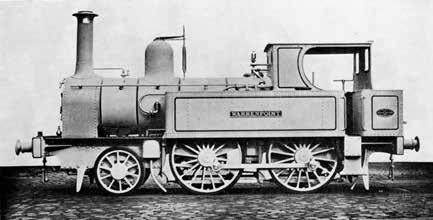
The railway opened to regular passenger traffic on Monday 28 May 1849 and the Newry Telegraph gave a full description of the event:
“… One great enterprise, having an intimate bearing on the prosperity of Newry has, notwithstanding many difficulties, been successfully completed. Let us hope that the joy so generally manifested at this result may inspire courage in undertaking, and perserverance in carrying out other works calculated to increase our trade. It would be idle to enter into speculations regarding the ultimate effect of this railway on the town of Newry. We entertain high hopes that in a variety of ways it will be a vast advantage. In a course of a few months the junction here will be convenient to outdoors and the citizens of Dublin and Belfast may come in two or three hours and refresh their minds by viewing scenery celebrated over the globe for its beauty.”
The Newry station was first situated at Kilmorey Street and then moved to Dublin Bridge with the line being carried across the Clanrye River on a swivel bridge.
Although started in 1846, the Newry line was not linked with Goraghwood until 1854. Goraghwood became an important junction, as it was on the Belfast to Dublin line and connected Newry and Warrenpoint with these two major cities. However, it was not until 1864 that the railway line from Goraghwood to Armagh was completed, traversing hilly terrain and connecting the towns of Markethill and Hamiltonsbawn.
Goraghwood Railway Station pictured after it closed in 1965. Courtesy of A. & B. Domleo
By 1861, the Town of Newry Connecting Railway linked the Newry and Warrenpoint Railway terminus at Dublin Bridge Station and the Newry and Armagh Railway terminus at Edward Street Station. The Great Northern Railway (Ireland) (GNRI) was formed in 1876 by a merger of the Irish North Western Railway, the Northern Railway of Ireland and the Ulster Railway. The Newry and Armagh Railway joined the GNRI in 1879 and the Newry and Warrenpoint network

Part A – Historical Introduction
The “Warrenpoint” was one of two small side tank locomotives that ran on the Newry, Warrenpoint and Rostrevor Railway between 1855 and 1882. From The Locomotive, July 15, 1936, p.215.
a year later in 1886. The line became a hive of activity, connecting Newry with Armagh, Belfast and Dublin and this helped to make Warrenpoint a principal destination of the local tourist industry, both locally and nationally.
It had been proposed from the 1840s to extend the railway from Warrenpoint onwards to Rostrevor, but this was never completed although a tramway was built, which opened in 1877. It was closed in 1915 after storm damage.
In the early 20th century, Newry was a transport hub. As part of the GNRI network, it was linked with Dublin, Belfast and south-central Ulster, while the London and Northern Railway Company ran a branch line between Newry and Greenore, from where a steam packet service departed for Holyhead. Travel time between Newry and London was less than twelve hours.
The Partition of Ireland in 1921 affected the GNRI line between Dublin and Belfast and the local branch lines. Arrangements for customs were introduced at Newry and Goraghwood, which were now in Northern Ireland.
Partition did not affect the holiday and Sunday excursion traffic to Warrenpoint. It continued to be a popular destination for tourists and daytrippers throughout the 1930s and 1940s.
The 1950s saw the beginning of the end for much of the local railway network. The Ulster Transport Authority (UTA) had been established in 1948 and in March 1955 the Sunday rail service between Newry and Warrenpoint was cancelled and replaced by a UTA bus service, although daily rail services continued.

Time table produced after the closure of the local branch lines around Newry and Warrenpoint. Newry and Mourne Museum Collection
In 1963 the Benson Report recommended closing all UTA railway lines with the exception of commuter lines around Belfast and the Belfast –Dublin line. The Report, with amendments, was implemented at the beginning of 1965 and this included the closure of the Goraghwood to Newry Edward Street line and the Newry to Warrenpoint line. The last train ran from Warrenpoint to Newry Edward Street Station on Saturday, 2 January 1965, with the last train leaving Newry for Goraghwood and Belfast the following evening.
Edward Street Railway Station in Newry at the time of its closure in January 1965. Courtesy of A. & B. Domleo

Part
A – Historical Introduction
Schedule of organised railway excursions to Warrenpoint from 27 April to 28 September 1924. This document was probably prepared by the GNRI for submission to the Boundary Commission. A total of 39,145 passengers were carried, illustrating the popularity of Warrenpoint as a seaside resort.

Newry and Mourne Museum Collection

Part B – Personal Memories of the Newry and Warrenpoint Railway
By Barrie Domleo, assisted by recollections from his brother Andrew Domleo
My mother was a local girl and during the early part of the Second World War, she met and married my father in 1942. He was from Nottingham and had worked on the sales team of Raleigh bicycles, before joining the Cheshire Regiment at the start of the War and had been sent to Northern Ireland to train men in advanced gunnery. I was born just after the War in 1946, and lived with my mother and grandparents in Great Georges Street, Warrenpoint, which was my first home, albeit for only a matter of months before we moved to England to join my father.
Bus outside Warrenpoint Railway Station c.1964. Courtesy of A. & B. Domleo
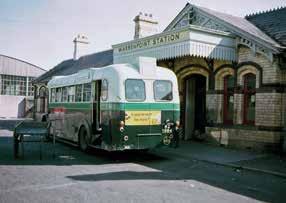
to Warrenpoint, that held the most fascination. I remember the hollow booming and squealing coach wheels, as the train seemed to be turning in a circle whilst crossing the canal at Buttercrane Quay. After a brief halt at Dublin Bridge station, we were soon twisting and turning onto the little girder bridge over the Clanrye River. Half a century later, I learned that the Clanrye bridge had been built to swivel open for sailing ships and the canal bridge was an almost unique rolling railway bridge, able to open for canal boats to pass.
From the mid 1950s, every three or four years, my mother, younger brother Andrew and I would come to Warrenpoint, usually in August, for a month long summer holiday with my grandparents, who by then had moved to a flat in Lower Dromore Road. My father would join us for the last fortnight. We travelled from our home in Esher, Surrey by train to London, then Liverpool and on the overnight boat to Belfast. I was never a good sailor and would be all shades of green by the early morning. We travelled by steam train to Newry and Warrenpoint. It was that last part of the journey, going through Newry and on

Staff at Warrenpoint Railway Station, James Cromie, Station Master (left) and Jimmie Lyttle, Railway Clerk (right) pictured in August 1964. Courtesy of A. & B. Domleo
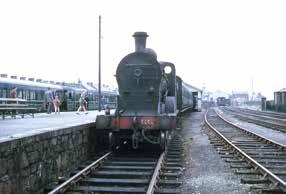
Part B – Personal Memories of the Newry and Warrenpoint Railway
Warrenpoint Railway Station pictured in 1964. Courtesy of A. & B. Domleo
The run to Warrenpoint seemed almost straight but increasingly pretty, with Carlingford Lough and the mountains on the southern side. Beyond Narrow Water station, if it was high tide, we boys could run from side to side in the carriage, to see the water on both sides. Magically there seemed to be nothing supporting the train. A short time later, we would be gliding into Platform One under its canopy at Warrenpoint Railway Station and the holiday began. My brother and I weren’t especially keen railway enthusiasts, but the little line cast a spell on us and we soon fell in love with it and with its staff.
Once we were old enough for Andrew to be let out with me in charge, we would be drawn to the railway station to see what might be happening… usually not a lot. Warrenpoint was the seaside terminus of the six mile single railway track from Newry that was popular with tourists, particularly at summer weekends. On a Sunday afternoon, there could often be several excursion trains parked up, with their locomotives simmering quietly in the sun, awaiting the evening return.
Part B – Personal Memories of the Newry and Warrenpoint Railway

 George Walker, Signalman at Warrenpoint Railway Station from 1946 – 1965. Courtesy of A. & B. Domleo
Left to right, Hughie P. McGuigan, Temporary Porter, Felix B. McCourt, Ticket Collector and Jimmie Lyttle, Railway Clerk, pictured at Warrenpoint Railway Station in August 1964. Courtesy of A. & B. Domleo
George Walker, Signalman at Warrenpoint Railway Station from 1946 – 1965. Courtesy of A. & B. Domleo
Left to right, Hughie P. McGuigan, Temporary Porter, Felix B. McCourt, Ticket Collector and Jimmie Lyttle, Railway Clerk, pictured at Warrenpoint Railway Station in August 1964. Courtesy of A. & B. Domleo
Interior of Warrenpoint Signal Box showing the interior fittings including electric staff instrument. No. 608, toward left hand side of image, with signal staffs in situ. (See NMM:2018.4. 2-3 and NMM:2018.4.46).

Courtesy of A. & B. Domleo
The line was predominately worked by elderly steam locomotives of Edwardian design, working out their last years. A few were still wearing the azure blue livery of the old Great Northern Railway (Ireland), under a heavy coating of grime. Some bore a crudely painted white X after their gold and red numbers, indicating the locomotive equivalent of ‘do not resuscitate’ should they encounter serious mechanical or boiler problems. These 4-4-0 and 0-6-0 tender locomotives were smaller and neater than we were used to seeing in England. Particularly on visits pre-1962, many still bore brass nameplates such as, Lough Melvin, Lough Gill, Meath, Louth and Down, Slievenamon and Lugnaquilla.
Although weekends brought a few other enthusiasts, during the week we had Warrenpoint station pretty much to ourselves. Initially the staff were puzzled by these two English kids who haunted their station day by day. They were, however, kind, funny and once they realised we

Locomotive being turned on the Warrenpoint turntable by railway staff assisted by Andrew Domleo (extreme right). As the line to Warrenpoint was a single track, the turntable allowed the trains to be turned around.
Courtesy of A. & B. Domleo
could be trusted, they were amazingly tolerant. A turning point came one day when the signalman, George Walker opened the door of his box, 150 metres away, and bellowed, “Are you coming up?”
He had made enquiries and discovered we were the grandsons of one of his neighbours, whom he much respected. Thereafter, Warrenpoint station was ours. I went here there and everywhere exploring and watching how a branch line railway worked. My brother, a braver soul than I, spent his time blagging footplate rides with some of the regular crews, up and down the line to Newry. One crew, particularly amused by his enthusiasm, kept a wooden beer crate on the locomotive, so he could reach the regulator and be taught how to drive the trains. They taught him the coordination of the regulator and reversing lever, the vacuum brakes and the tricky balance of water and steam feeds to the injectors, to put water into the boiler.
Part B –
Personal Memories of the Newry and Warrenpoint Railway
Interior of cab of steam locomotive engine c. 1964. A footplate lamp (NMM:2018:4.18) can be seen in centre of image.

Courtesy of A. & B. Domleo
Andrew reminded me that, from my grandparent’s first floor flat, we could see a short section of the railway even though it was some way away across the golf course. He would watch each morning for the incoming 6.30am goods train heading for Warrenpoint and, using his grandfather’s binoculars, would check if there was the visible (if not audible) double wisp of steam from the whistle, He knew then, it was the crew who would give him a footplate ride, letting him know they were on duty. He had previously shown them from the footplate where he was staying. Andrew
would then jog the mile or so down to the station and join them on the engine for the shunting duties in Warrenpoint yard. After a bit of a break it was time to ride out with them to Edward Street, Newry where further shunting and re-arranging of wagons was carried out. I had other priorities and would take over the binoculars, to check the bread vans were in the train, happy in the knowledge that in a short time, fresh soda bread would be arriving at our door.
On one occasion, as Andrew had been successfully taught how to open the regulator and pull out of Warrenpoint station with a loaded passenger train, the crew suggested he came with them and had a go at shunting at Edward Street, Newry. On this occasion, it was with a solitary closed van which had been de-coupled, to be
Part B – Personal Memories of the Newry and Warrenpoint Railway
Using a petrol driven machine to unscrew the bolts holding down the cast iron chairs on the railway track at Narrow Water in August 1965 after closure of the railway line. Courtesy of A. & B. Domleo

shunted into the goods shed. Unfortunately he did not allow for the difference in weight between one wagon and a loaded passenger train. Having wound the valve gear into reverse he opened the regulator as normal. The driver leapt up as he realised his error, snapped the regulator shut and applied the brakes. However, it was too late, as the untethered wagon disappeared at speed into the gloom of the goods shed. He remembers clearly both the driver and fireman each with a fixed stare over the tender at the disappearing wagon. There was quite a long silence then a series of very loud bangs as the loose wagon struck the other wagons in the shed, again silence returned for a few seconds, during which time a rusty-coloured pall emerging from the goods shed, immediately followed by the shunter, waving his arms and yelling a tirade of unintelligible expletives, he too was covered in the same red dust. Needless to say, Andrew wasn’t invited to participate in shunting duties again. Following the shunting there was
some time before the crew were ready to take the goods train out to Goraghwood, so they would all decamp for tea in Newry North Signal Box. Here they would share with him a mug of their ‘engineman’s tea’. It was totally unlike anything he had ever tasted before (or since), and you really could stand your spoon up in it.
In 1961, I had begun photographing, using my father’s old Kodak folding camera. To my consternation, there was about a 50% failure rate, with patches of fogging on many of the pictures. Eventually the problem was diagnosed as pinholes in the camera’s bellows. I lost a number of interesting photos of some of the older engines, which had gone to the scrapper’s torch by the time we next returned. The early 1960’s were not a good time to be a branch line railway, in England or Ireland. So, it was no surprise when our grandmother wrote and told us that 1964 was likely to be the line’s last summer of operation. It was also no surprise to all the adults in the family that we would be holidaying in Warrenpoint that summer.
This time we were armed with two modern 35mm still cameras, my father’s Canon full frame that we used with black and white negative film and Andrew’s Olympus Pen half frame camera with Kodak colour transparency film. I also had a 9.5mm ciné camera. We bought as much still and cine film as we could afford. The ciné exercise almost ended in disaster. I had ordered in good time, about 20 minutes of 9.5mm Ferraniacolour film from John Bentley, a photographic specialist in Yorkshire. Two days before the holiday was to start… still no film. I rang Mr Bentley and bless the man’s heart, he shipped me another consignment, to meet us at Liverpool Lime Street
Part
B – Personal Memories of the Newry and Warrenpoint Railway
Station. We were determined and were now able to give the railway our very best effort at recording its charms.

With the clarity of hindsight, I should have had some tuition into the art of photographic composition and we ought to have found some more money for another couple of colour transparency films. As it was, out of our 470 odd pictures, only 72 were in colour. But Andrew reminded me that we also had other running expenses to take care of… chips from the chippy at the end of Newry Street and Malocca’s Italian ice cream.
There were no obstacles to our roaming and photographing around Warrenpoint… occasionally, George Walker would open his box window and bellow for us to be sure to get out of the way, as he wanted to start a train. But I wanted to be able to photograph, not only Warrenpoint but also up and down the line. I’m sure George and his ‘bush telegraph’ could have fixed it for us, but I had written to the Ulster Transport Authority on behalf of my brother and myself. Back came ‘waiver’ forms for us to fill out and in due course, we had trackside and footplate passes for August… and thankfully they didn’t enquire our ages.
That summer of ’64 was mostly sunshine, but with a smattering of what my grandfather would call,
Part B – Personal Memories of the Newry and Warrenpoint Railway
Dismantling the railway track at Warrenpoint Railway Station in August 1965. Courtesy of A. & B. Domleo
‘soft days.’ I can remember afternoons lying on distant embankments in the sun, with tripod set up, ciné film loaded, camera spring fully wound and railway timetable in hand. But often, the train would come with loco the wrong way around from the previous shot, or an extra coach or goods van tacked on the rear. Oh, the joys of amateur film making! With the benefit of hindsight, I missed so many opportunities back in 1964… like going to talk to all the signalmen about working their railway. I also didn’t realise what engineering gems there were in the Clanrye swivel bridge and the unique canal bridge, rolling to open and close. I could have studied and photographed them so much more.
At the end of August 1964 we said goodbye to our beloved railway, to George and the other staff. George had been quietly working with another signalman down the line, who had been unscrewing three small redundant pieces of signalling equipment from his signal box, which George presented to us as ‘mementos’ of his railway. We have them to this day and are delighted for them to come ‘home’ to Newry and Mourne Museum.
Andrew ‘arranged’ for another visit to Warrenpoint in August 1965. He recounted to me his experiences. He managed his final visit to the Warrenpoint railway to coincide with the start of the demolition of the line, six months after the last train and three months after abandonment was authorised. He arrived at Warrenpoint station on the afternoon of the second day of the track removal, and a fair amount of the station yard was already cleared of rail. One man was using a petrol-driven machine to unscrew the bolts holding down the cast iron chairs. The bolts
holding the fishplates joining the rails, were cut with an oxy-propane torch. The screws, chairs and fishplates were all stacked in piles, to be collected later. Another man was using a Fordson tractor to tow each pair of disconnected rails and adding them to stockpiles in the railway yard, sleepers were lifted by pickaxe and stacked. And so they progressed steadily up the line.
He soon set about collecting ‘mementos’ from Warrenpoint Railway Station buildings, goods shed and signal box. When he had collected as much as he could carry, he would walk back to our grandmother’s home and empty his shoulder bag onto shelving in the garden shed. He would then return to the station for more. When he had ‘saved’ everything that he could find, he spent the rest of the holiday walking the line and photographing the progress of the demolition. He became friendly with the man unscrewing the track bolts and would keep encountering him down the line.
On one occasion, when the track removal had reached just beyond the Dow-Mac crossing (near the derelict Dow-Mac concrete works), he met him in conversation with his boss, (presumably Mr. Eastwood), who wanted to know who my brother was and what he was doing. Andrew explained he was making a photographic record of the line and saving a few ‘mementos’. (at the time he was standing close to the Warrenpoint “Advance” signal which he later salvaged). The boss decently said he was welcome to have any old paperwork or wood items, but to leave any heavy scrap metal. Andrew mostly kept to this instruction, with the exception of the signal head and also the GNRI fire fender, which was in the staff room at one end of the station buildings.
B – Personal Memories of the Newry and Warrenpoint Railway
Part
Carrying this on his shoulder for the mile or so back home did make him question his sanity, but he managed it with frequent stops, even though his shoulder bore the imprint for a couple of days.
For the last week of his stay our father joined him and had hired a car at the airport. Andrew persuaded him to give him a lift to Newry to enable exploration for any further ‘mementos’. Dublin Bridge signal box was still completely intact apart from glass, but he was too nervous to enter it. Every time he went near it, a gang of road menders working close by would jeer at him. Newry North Signal Box had been vandalised and completely gutted by fire, so there was nothing left. Apart from the brass plate from the Pooley Weighing Machine on the platform at Edward Street, there were no further artefacts from Newry, just photos.
For reason of economy, our black and white negative films had been processed by local chemists, or their photo processors and just sheets of small ‘contact’ prints produced. The colour transparency film was processed by Kodak and we were able to see the results when we got home. The ciné film was processed and also sent home. The disappointments began immediately, with no automatic exposure meter, half of the 20 minutes of ciné film had been under exposed and what had been glorious sunshine looked like a heavy overcast. The black and white pictures were an unexpected disappointment. Printing up sample rolls to postcard sized prints, it became evident that the local processing had been less than kind to our negatives. Random scratches, scuff marks and ‘foreign bodies’ abounded. One chemist’s work in particular, produced negatives with so many curly black hairs, that we joked he processed in ‘minced sweater soup.’
A few artefacts from the line we displayed at home, but most items, the black and white negatives, colour transparencies and the ciné film were consigned to a cupboard for most of the next forty years. The ciné film came out to be run occasionally and it gradually acquired dirt and scratches. In 2008 I learned that BBC Post Production still had a teleciné machine that could run small gauge film, to scan to digital. So I booked in to have my Warrenpoint film digitised in as good quality as possible, dreading the likely cost. We hand cleaned the film, remaking some splices. The technician worked hard to colour and density grade every shot in the film. He brought back much of the colour and lightened many of the shots that had been so dark. But sadly, he couldn’t do anything about the scratches and some of the dirt marks, unless I had a much larger restoration budget.
Fortunately, in the still photography world, technology had moved on and ‘Photoshop’ had arrived. I was able to beg and bribe two technically ‘savvy’ friends, to scan the black and white negatives and carry out some repairs, to bring them up to a quality where they could be used. The transparencies were also digitised and repaired. I now had all of our 1960s photographic material in digital form.
The next ‘breakthrough’ came when I discovered online, ‘The Old Warrenpoint Forum’, a social history website for the town. On there, I found just a few black and white pictures of the old railway. I looked again at our colour transparencies from 1964, selected a couple of dozen, put these on a disc and sent it to Brian McCalmont, the moderator of the website, just in case anyone might be interested. The result
B – Personal Memories of the Newry and Warrenpoint Railway
Part
astonished me. Brian created our own file on the website and began to dribble the pictures on, a few at a time. Comments were lovely, memories of going to school by train, younger viewers wondering where the railway had been and one lady, Pauline Reardon, who introduced herself as the signalman George Walker’s daughter. We had great on- and off-line conversations.
Brian made the comment to me that I knew where the railway had been, but I’d be hard pressed to find any trace of it today. So in 2013, I came back for the first time since 1965 and found that Brian was quite correct. I’d never known a railway disappear quite so totally. As I felt that deluging the Warrenpoint Forum website with all our photographic and ciné material, was unfair and would be boring, I resolved to buy a camcorder, film editing software and try to make a documentary about the little line. I would use some of our photographs, transparencies and film. I came back over two subsequent summers and filmed the site of the railway, including a memorable car tracking shot from Warrenpoint to Newry, along the road built over the railway. I had to shoot that tracking shot five times. Four times, the weather changed along the route, mid shot.
In 2014, I went to Newry and Mourne Museum for the first time, to see if they might have anything that could be helpful to my documentary. The staff there were very friendly and exceptionally interested in what I was trying to do. It wasn’t long before I had the Curator and Assistant Curator looking at my laptop, the railway photo’s and pictures of some of the railway artefacts that I had back at home. They explained that in spring 2015 they would be having a temporary exhibition, The world has become
smaller: transport through the ages in Newry and Mourne. They invited me to participate and I was very pleased to do so, with some of our photo’s and a few artefacts.
I was only just back home to Surrey in 2014, when I received a phone call… “are you the man who has been filming the old railway to Warrenpoint? This is BBC Northern Ireland, we’re also making a documentary about the same railway and wondered if you could be persuaded to come back and let us film you? We know about you conversing on line with Pauline Reardon about her late father, the signalman at Warrenpoint. We hope to bring her back, to meet you on camera.”
And so, I came back for the BBC, met Pauline on camera and was able to have an extra filming session for myself. Pauline had told me by email, that sadly the only memento of her dad’s railway career was a small UTA cap badge. As a direct result of my brother’s 1965 ‘salvage operation’, I was able to give Pauline her dad’s peaked cap, his brass GNRI cap badge from earlier days in his career, his flags from the signal box and a colour photocopy of a busy day from her dad’s last signal box register of trains.
I struggled with my documentary, learning the editing technology and trying to work out how to structure the film, and getting nowhere fast. One day in December 2014 a friend rang me to ask if I’d like a visit to Pinewood Film Studios. He was going there to have a 16mm film scanned and restored. “Can they cope with 9.5mm film?” The answer was “probably”, so I was off to Pinewood with my reel of Warrenpoint film. Jim, the technical wizard there, was much more interested in my 9.5mm challenge, than my poor friend’s
Part B
– Personal Memories of the Newry and Warrenpoint Railway
16mm film. Mine was straight on the machine for scanning. He explained that it was a ‘wet gate’ scanner, a volatile solvent temporarily filled in many of the scratches and made them less visible. After scanning, he put the material through half a dozen digital restoration processes to remove dirt, most remaining scratches and steady the image vertically and horizontally. I sat with my mouth open at the wonderful results.
Over the years I have researched and learned much about the little railway. But I don’t consider myself any kind of expert, others such as the late Des Fitzgerald with his lovely book The Warrenpoint Branch are more entitled. But I did learn a love of the line and some of its people, an appreciation of the beauty of the Carlingford Lough area and the joy of all machines driven by steam.
After the end of their very successful 2015 local transport exhibition, Dr Ken Abraham from Newry and Mourne Museum said there had been great interest in the railway exhibits and approached me about acquiring our entire railway artefact collection from the line. After a brief discussion with my brother, who had been responsible for collecting most of the artefacts at the time of demolition, we both agreed that we couldn’t think of a better home for all the material, than back ‘home’ in Newry. We were happy to give our disparate collection to the Museum and now some of it will be going on display for the first time since 1965 in this new temporary exhibition
An Excursion into the History of the Newry to Warrenpoint Railway
B.D. June 2018
Part B – Personal Memories of the Newry and Warrenpoint Railway
 Andrew Domleo pictured walking along the disused Newry to Warrenpoint railway track in August 1965.
Courtesy of A. & B. Domleo
Andrew Domleo pictured walking along the disused Newry to Warrenpoint railway track in August 1965.
Courtesy of A. & B. Domleo
Part C – Catalogue of Newry to Warrenpoint Railway Collection

Catalogued by Noreen Cunningham and Ken Abraham Photography by Joanne Glymond and Noelle Murtagh
REFERENCE NMM:2018.
ITEM DESCRIPTION
4.1 Railway lamp Round hand lamp with brass maker’s plate “LONDON AND NORTH WESTERN RAILWAYS MAKERS LOCOMOTIVE DEPARTMENT CREWE”. Rotating interior, complete with red and green filters, burner and tank.

4.2 Signal staff



Used in electric staff instrument (see NMM:2018..4.46) in Warrenpoint Signal Box. Includes “WARRENPOINT ” brass nameplate. This signal staff was originally used on the King Street to Dublin Bridge section of railway in Newry, and was later ‘rebadged’ with the Warrenpoint nameplate.
4.3 Signal staff
Used in electric staff instrument (see NMM:2018.4.46) in Warrenpoint Signal Box. Includes “NEWRY SOUTH” brass nameplate.
4.4
Part C – Catalogue of Newry to Warrenpoint Railway Collection
Coach destination board Wooden board with “Warrenpoint” written on one side and “Goraghwood” on other side.
4.5 Coach destination board Wooden board with “Newry and Warrenpoint” written on one side and “Newry and Goraghwood” on other side.
4.6 Terminal ‘T’ board “T” shaped board, signifying ‘Terminal’ - end of speed restriction between Narrow Water cutting and Green Island originally on top of a post (see NMM:2018.4.56).
4.7 Railway sign A double-sided enamel sign with lettering “TO RAILWAY STATION” with a hand and pointing finger.

4.8 Wagon number plate Cast iron sign with wording around outer area “REGISTERED BY THE BCDR”, and in centre “TO CARRY 10 TONS 1902” from an open coal truck.

4.9 Railway sign Cast iron sign circa 1890 with the wording “GREAT NORTHERN RAILWAY CO (I) HEREBY GIVE PUBLIC WARNING TO ALL PERSONS NOT TO TRESPASS UPON THIS RAILWAY. TRESPASSERS WILL BE PROSECUTED”.




4.10 Wagon number plate Metal plate embossed with “LMS NCC 2596” from an open coal truck.
C – Catalogue of Newry to Warrenpoint Railway Collection
Part
4.11 Wagon number plate Metal plate embossed with “MR NCC 694” from an open coal truck.

4.12 Wagon number plate Metal plate embossed with “BNCR 153” from an open coal truck.




4.13 Wagon number plate Metal plate embossed with “BNCR 220” from an open coal truck.
4.14 Railway lamp Signal post lamp, square-shaped, interior complete with burner and tank.
4.15 Railway lamp
Round hand lamp with bevelled plain glass. Rotating interior with tank, burner and reflector. Above the glass front, a brass maker’s plate is embossed with “PETROLEUM HAND LAMP” and maker’s name “WILLIAM SUGG & CO LTD”. The left hand side of lamp is inscribed with “GNRI” &“HAMILTONSBAWN”.
4.16 Railway lamp
4.17 Railway lamp
Round hand lamp with fluted top, with no front glass. At upper left hand side a brass maker’s plate is embossed with “GABRIEL & CO. MANUFACTURERS BIRMINGHAM” and with “GNR (I)” inscribed below on side of lamp.
Round hand lamp, fluted top, bevelled plain glass. Rotating interior, with red curved glass filter, tank, burner and reflector. Inscribed on side with “GNRI”.
4.18 Footplate lamp Locomotive footplate lamp, with red and green plastic side filters, one plastic panel missing. Inscribed “GNRI” on top.
Part
C –
Catalogue of Newry to Warrenpoint Railway Collection
4.19 Lamp top A top for lamp with a brass maker’s plate embossed with “PETROLEUM HAND LAMP” and maker’s name “WILLIAM SUGG & CO LTD”.
4.20 Hand lamp burner and reflector Stamped with “U.S. LMSR”.
4.21 Fireplace fender Heavy cast iron fender cast with initials “GNRI” on front part of fender. Almost certainly part of the inventory when the GNRI opened the new Warrenpoint Railway Station in 1890.
4.22 Signal wire pulley Double signal wire pulley cast with “GNR (I)” initials.
4.23 Single wire pulley Single signal wire pulley cast with “GNR (I)” initials.
4.24 Lever stop collar Lever stop collar cast with “RSCO 3193 GNRI” on front of collar, and with “STOP” on straight end of collar. Located in Signal Box to prevent levers being pulled accidentally. RSCO signifies Warrenpoint Railway Signal Company.
4.25 Lever stop collar Lever stop collar cast with “RSCO 3193 GNRI” on front of collar, and with “STOP” on straight end of collar. Located in Signal Box to prevent levers being pulled accidentally. RSCO signifies Warrenpoint Railway Signal Company.
4.26 Penny Penny flattened on a railway track by passenger train at Narrow Water.
4.27 Shunter’s hook Forged wrought iron hook head from a shunter’s pole, used to couple and uncouple wagons. Stamped with lettering “E&W LUCAS”.
4.28 Track hold down spike From the section of flat bottomed rails between Green Island and Narrow Water cutting.
4.29 Carriage door key A tapered square key to operate all carriage door locks.
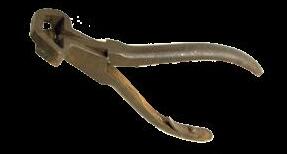

4.30 Track hold down plate From the section of flat bottomed rails between Green Island and Narrow Water cutting.
4.31 Maker’s plate from crane Plate cast with “ROWLAND AND PRIEST CRADLEY HEATH PATT No 4022 A SAFE WORKING LOAD 1 TON 1941”. The maker’s plate was attached to a small one tonne crane outside the Goods Depot at Warrenpoint Railway Station.
4.32 Signal head For signal number 20 the “Advance.” It comprises (1) main casting (2) pivot casting (3) spindle (4) cover plate (5) wooden red and white arm (6) small tin box containing red and blue/green glass from the signal lenses.
4.33 Punch Used by the ticket inspector at Warrenpoint Railway Station to punch passenger’s tickets.
Part C – Catalogue of Newry to Warrenpoint Railway Collection
4.34 Punch Known as a ‘code punch’ and used for crimping the lead and wire seals, (see items NMM:2018.4.104 and NMM:2018.4.107), for the closed van doors.

4.35 Signal repeaters Repeater instrument for Signal 29. Made by Tyer & Co. in 1942, the signal head on the railway line sent the signal to this instrument in the Warrenpoint Signal Box.
4.36 Signal repeaters

Repeater instrument No. 1. made by Tyer & Co. in 1942, from King Street Signal Box. The signals for Signal Repeater instruments 1 and 2 were on the curve from Buttercrane Quay to King Street level crossing.

4.37 Signal repeaters
Repeater instrument No. 2. made by Tyer & Co. in 1942, from King Street Signal Box. The signals for Signal Repeater instruments 1 and 2 were on the curve from Buttercrane Quay to King Street level crossing.

Part
C – Catalogue of Newry to Warrenpoint Railway Collection
4.38 Signal box bell Bell made by “Interlocking Signal Co. Ltd. London & Glasgow”, from King Street Signal Box. The bell gave warning for oncoming trains. This Signal box bell was originally used on the Newry, Dundalk and Greenore Railway, which closed in 1951.
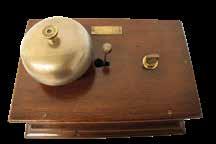
4.39 Signal flag A green signal flag from Warrenpoint Signal Box.
4.40 Signal flag A red signal flag from Warrenpoint Signal Box.
4.41 Signal flag An amber signal flag from Warrenpoint Signal Box.
4.42 Signal flag A green signal flag from Monaghan Street Signal Box in Newry.
4.43 Signal flag A green signal flag with a broken shaft from Edward Street Signal Box in Newry.
4.44 Crest transfer Purchased by donor from Tearne & Sons Ltd of Birmingham and mounted on a mahogany veneer panel. The Great Northern Railway Board (GNRB) crest would have been used on locomotives and coaches. The GNRB operated from 1953-1958.
4.45 Crest transfer Purchased by donor from Tearne & Sons Ltd of Birmingham, and mounted on a mahogany veneer panel. The Great Northern Railway Ireland crest would have been used on locomotives.

4.46 Replica of Electric Staff Instrument No. 608, with original fittings
The original instrument was supplied in 1893 to the GNRI, one of ten instruments sent. No. 608 was installed in Warrenpoint Signal Box and was in use until the line closed in 1965.
The electric train token system was a safety feature mechanism on singleline railway sections, so no two trains could be on the line at the same time.
Signal staffs or ‘tokens’ were stored in the electric staff instruments, which were connected by telegraph lines. A staff could only be removed from one instrument only if both signalmen co-operated in agreeing to the release. Once a staff had been removed, another cannot be removed until the signal staff which is “out” is replaced in either instrument. By this means, it can be ensured that at any one time, only one staff is available to be issued to a driver. Staffs belonging to adjacent sections have different configurations or ‘brass rings’ to prevent them being inserted into the wrong instrument. (See NMM:2018:4.2-3).
C – Catalogue of Newry to Warrenpoint Railway Collection
Part
4.47 Letter
From K.J. Kornold, Technical Administration at The Signal Railway Company Limited to Andrew Domleo dated 14th February 1969. States that the Company’s records show that Staff Instrument No. 608 was dispatched in 1893 to the Great Northern Railway of Ireland. Goes on to say that the staffs supplied were engraved “Dublin Bridge” and “Warrenpoint” for Instrument No. 608.
4.48 Form Completed form reporting that the instrument was out of order [at Warrenpoint Railway Station] from 7 pm until 10:20 pm, December 1897.
4.49 Form Completed form reporting that the electric train staff between Dublin Bridge and Warrenpoint was out of order at 3.15 pm and ‘put right’ at 4.53 [pm] on 27 June 1898.
4.50 Form Electric Token Block System form to be completed during the working of the signal lines by a Pilotman during an obstruction or failure of a token apparatus or when signal staff was lost or damaged, circa 1930. Bundle of 15 blank forms.
4.51 Form Electric Token Block System form to be completed during the working of the signal lines by a Pilotman during an obstruction, circa 1940. Bundle of four blank forms.
4.52 Ticket Pilotman’s Ticket to be given to the Engine Driver or Guard during the working of a signal line by a Pilotman, circa 1940. Bundle of ten blank tickets.
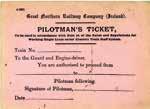
4.53 Ticket Pilotman’s Ticket to be given to the Engine Driver or Guard during the working of a signal line by a Pilotman, circa 1900. Bundle of six blank tickets.
4.54 Ticket
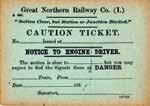
Caution Ticket to be given to the Engine Driver by the Signalman when a section may be clear but the station or junction blocked, circa 1910. Bundle of four blank tickets.
4.55 Ticket
Caution Ticket to be given to the Engine Driver by the Signalman when a section may be clear but the station or junction blocked, circa 1920. Bundle of five blank tickets.
4.56 Notice Issued by the Railways Manager’s Office, Belfast, for the period 15 - 21 August 1964. Lists miscellaneous information on equipment, repairs and maintenance on railway lines including Goraghwood, Warrenpoint and Newry. Also details the installation of a speed restriction on the Warrenpoint line (see NMM:2018.4.6).
Part C – Catalogue of Newry to Warrenpoint Railway Collection
4.57 Note Handwritten note from Warrenpoint Signal Box and relates to a telephone switch selector for which the brass plate survives (see NMM:2018.4.57) listing pointer positions and code of bells.
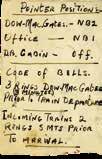
4.58 Certificate Certificate of Registration in the Register of Restaurants. Certifies that the Railway Refreshment Rooms, Warrenpoint, Great Northern Railway (Ireland) have been registered in the Register of Restaurants for the year ending 31 March 1949.
4.59 Notice Instructions for the Protection of Carriage Cleaners, Examiners, Electricians, Brake Fitters, and others Working on Coaching and other Stock. Sets out the safety regulations for employees working on rolling stock, circa 1930. From Edward Street Station in Newry.
4.60 Parcel label
Great Western Railway parcel label for transport of live stock, circa 1940.

4.61 Parcel label
Great Western Railway parcel label for transport of eggs, circa 1940.


4.62 Parcel label
Great Western Railway parcel label for transport of glass objects, circa 1940.
Part C – Catalogue of Newry to Warrenpoint Railway Collection
4.63 Parcel label Great Western Railway parcel label for transport of items ‘WITH CARE’, circa 1940.

4.64 Parcel labels Three railway parcel labels for transport of perishable produce, circa 1940.
4.65 Dockets Two printed pro-forma loading dockets from Warrenpoint Railway Station for the transport of beer bottles, circa 1950.
4.66 Dockets Three printed blank pro-forma dockets for the transport of ‘Guinness Empties’ [bottles] circa 1950.
4.67 Dockets Four printed blank manilla pro-forma British Railways Station Wagon dockets for the transport of goods, circa 1950.
4.68 Dockets Three printed blank manilla pro-forma Ulster Transport Authority dockets with red lettering for the transport of ‘Dutiable’ goods from a railway station to a customs station, circa 1947.
4.69 Docket Printed pink blank pro-forma Ulster Transport Authority docket for the transport of goods from Belfast (Grosvenor Street) Railway Station to another destination, circa 1947.
4.70 Dockets Seven printed blank manilla pro-forma Ulster Transport Authority dockets with red lettering for the transport of goods by sea and train, circa 1947.
4.71 Dockets Five printed blank manilla pro-forma Ulster Transport Authority dockets with blue lettering for the transport of ‘Important Goods’, circa 1940.
4.72 Consignment note Two printed manilla pro-forma Great Northern Railway Company (Ireland) consignment notes for the carriage of potatoes, stamped ‘Warrenpoint Goods’, circa 1940.
4.73 Consignment note Three printed manilla pro-forma Great Northern Railway Company (Ireland) consignment notes for the carriage of damageable goods. Stamped ‘Warrenpoint Goods’, circa 1940.

4.74 Notice Printed notice ‘ENGAGED COACH’. To be displayed when coach had been prior booked, circa 1940.
Part C – Catalogue of Newry to Warrenpoint Railway Collection
4.75 Flyer Printed green flyer advertising day excursions from Warrenpoint and Newry to Dublin on Tuesdays during July and August 1964. Includes ticket prices. Ulster Transport [Authority].

4.76 Time table Printed time table in manilla covers for rail services between Newry and Warrenpoint from 11th September 1961. Includes bus connections with Kilkeel and Newcastle.
4.77 Time table Printed time table in manilla covers for rail services between Belfast and Dublin and Belfast and Portadown from 4th January 1965 after withdrawal of rail services between Goraghwood, Newry and Warrenpoint

4.78 Ticket Six-day train ticket issued at Warrenpoint to Mrs Rigby, grandmother of donor, for daily travel between Warrenpoint and Portadown. Expiry date 25 July 1964.

4.79 Ticket Child’s Afternoon Excursion train ticket for return travel between Newry and Warrenpoint, second class. Date stamped on reverse: 9 Au 64.
4.80 Ticket Train ticket for travel from Warrenpoint to Newry, second class. Date stamped on reverse: 09 Au 64.
4.81 Ticket Child’s train ticket for travel between Warrenpoint and Newry, second class. Date stamped on reverse: 16 Au 64.
4.82 Ticket Train ticket for travel from Warrenpoint to Newry, second class. Date stamped on reverse: 16 Au 64.
4.83 Ticket Train ticket for travel from Warrenpoint to Newry, second class. Date stamped on reverse: 16 Au 64.
4.84 Ticket Child’s Afternoon Excursion train ticket for return travel between Newry and Warrenpoint, second class. Date stamped on reverse: 21 Au 64.
Part C – Catalogue of Newry to Warrenpoint Railway Collection
4.85 Ticket Child’s Afternoon Excursion train ticket for return travel between Newry and Warrenpoint, second class. Date stamped on reverse: 24 Au 64.
4.86 Ticket Train ticket for travel from Warrenpoint to Newry, second class. Date stamped on reverse: 24 Au 64.
4.87 Ticket Train ticket for travel from Warrenpoint to Newry, second class. Date stamped on reverse: 24 Au 64.
4.88 Ticket Train ticket for travel between Warrenpoint and Newry, second class. Date stamped on reverse: 24 Au 64.
4.89 Ticket Train ticket for travel from Warrenpoint to Newry, second class. Date stamped on reverse: 24 Au 64.
4.90 Ticket Train ticket for travel from Warrenpoint to Newry, second class. Date stamped on reverse: 24 Au 64.
4.91 Ticket Child’s Afternoon Excursion train ticket for return travel between Newry and Warrenpoint, second class. Date stamped on reverse: 24 Au 64.
4.92 Ticket Child’s Afternoon Excursion train ticket for return travel between Newry and Warrenpoint, second class. Date stamped on reverse: 21 Au 64.
4.93 Ticket Train ticket for travel from Belfast to Warrenpoint, second class. Date stamped on reverse: 18 JE 65.
4.94 Ticket Train ticket for travel from Belfast to Warrenpoint, second class. Date stamped on reverse: 18 JE 65.
4.95 Ticket Train ticket for travel from Dublin to Warrenpoint. Date stamped on reverse: 19 Au 64.
4.96 Tickets Miscellaneous train return tickets for journeys to and from Warrenpoint, tickets are torn in half.
4.97 Docket Printed docket requesting Booking Clerk at Warrenpoint Railway Station to issue a ticket to a railway workman a Third Class Daily Workman’s Return Ticket for travel to Newry at a special fare, circa 1930.

4.98 Register Register recording goods wagons arriving at and departing from Warrenpoint Railway Station. Lists wagon number, owning company, sheet number, description code and details of railway station of origin and destination. 30 October 1952 to 26 January 1953. Card covers, printed proforma pages, details handwritten in pencil.
4.99 Ledger Log book recording trains passing signal box at Warrenpoint Railway Station. 27 August 1948 to 29 November 1948. Card covers, printed proforma pages, details handwritten in ink.
4.100 Ledger Log book recording trains passing signal box at Warrenpoint Railway Station. 9 January 1951 to 12 April 1951. Card covers, printed pro-forma pages, details handwritten in ink.
4.101 Ledger Log book recording trains passing signal box at Warrenpoint Railway Station. 21 December 1954 to 8 April 1954. Card covers, printed pro-forma pages, details handwritten in ink.
4.102 Ledger Log book recording trains passing signal box at Warrenpoint Railway Station. 9 April 1955 to 25 September 1955. Card covers, printed proforma pages, details handwritten in ink.
Part C – Catalogue of Newry to Warrenpoint Railway Collection
4.103 Ledger
Log book recording trains passing signal box at Warrenpoint Railway Station. 11 February 1956 to 11 August 1956. Card covers, printed proforma pages, details handwritten in ink.
4.104 Seal Seal from railway wagon door. Small round lead seal with metal disc attached to wire. Metal disc is embossed with the letters “U.T.A.A”.
4.105 Seal Seal from railway wagon door. Small round lead seal attached to wire embossed with the letters “W.P.”.
4.106 Seal
Seal from railway wagon door. Small round lead seal attached to wire embossed with the letters “G.N.R. (I)” on one side and “GEORGI” on the other side.
4.107 Seal Seal from railway wagon door. Small round lead seal attached to wire embossed with the letters “G.N.R. (I)” on one side and “BF” on the other side.
4.108 Brass plate From a Pooley Weighing machine. Central panel embossed with letters G.N.R. (I) 80 and border embossed with letters “H. POOLEY & SON LD. CONTRACTORS”. From either Warrenpoint Railway Station platform or Edward Street Railway Station platform, Newry.
4.109 Brass plate From a Pooley Weighing Machine. Central panel embossed with letters G.N.R. (I) 88 and border embossed with letters “H. POOLEY & SON LD. CONTRACTORS”. From either Warrenpoint Railway Station platform or Edward Street Railway Station platform, Newry.
4.110 Brass plate
Oval brass plate from a machine at Warrenpoint Railway Station. Embossed with letters “SAMUEL TAYLOR & CO MANUFACTURERS 14567 LIONEL ST BIRMINGHAM”.



4.111 Brass plate
Brass plate from a telephone switch selector, from Warrenpoint Signal Box engraved with lettering: “STATION MASTERS OFFICE” and “NEWRY DUBLIN BRIDGE CABIN”, giving a choice of locations. The switch selector was repurposed at some stage, as the handwritten instructions (see NMM:2018.4.57) include the crossing keeper at Dow-Mac.
4.112 Detonator
Track warning detonator (spent) for warning trains of works or obstruction on railway line.
4.113 Cotton waste Used by train engine drivers.
Part C – Catalogue of Newry to Warrenpoint Railway Collection
Acknowledgements
Thanks are due to the staff, interns and volunteers of Newry and Mourne Museum for their assistance in this exhibition and accompanying booklet:
Declan Carroll
Joanne Cummins
Judith Findlater
Joanne Glymond
Caroline Hegarty
Seamus Laverty
Anna Marie McClelland
Amanda McKinstry
Noelle Murtagh
Dympna Tumilty
Special thanks to Barrie and Andrew Domleo, who without their generosity, this exhibition and catalogue would not have been possible. We would like to pay tribute to their farsightedness as teenagers in collecting what is now a unique collection, and of vital importance to the heritage of the area.
We would also like to extend a special thanks to those who contributed to the exhibition through donations, loans, expertise or memories including:
Sean Barden
William McAlpine
Brian McCalmont
Ursula Mhic An tSaoir
Thomas Murphy
Pauline Reardon
Compiled and edited by Noreen Cunningham and Ken Abraham.
Every effort has been made to correctly attribute photographs used in this booklet and accompanying exhibition.
07929131753
Design: G. Watters
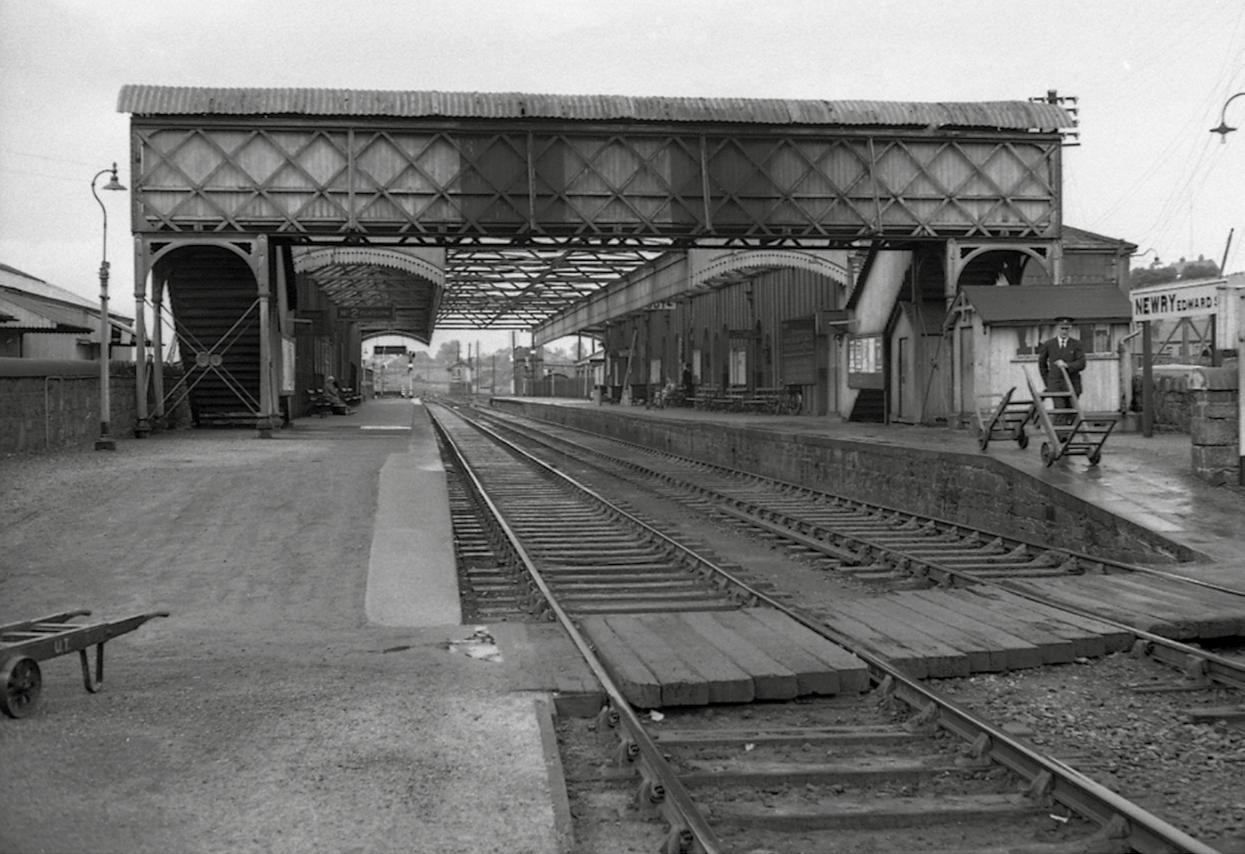
 Warrenpoint Railway Station, c. 1964. Courtesy of A. & B. Domleo
Edward Street Railway Station in Newry, c. 1964. Courtesy of A. & B. Domleo
Warrenpoint Railway Station, c. 1964. Courtesy of A. & B. Domleo
Edward Street Railway Station in Newry, c. 1964. Courtesy of A. & B. Domleo
A diesel train on the Newry to Warrenpoint railway line passing Narrow Water Castle in the summer of 1964. The line closed in January 1965.



© William McAlpine


 Cover: Goods train at Warrenpoint Railway Station c. 1964.
Courtesy of A. & B. Domleo
of A. & B. Domleo
Cover: Goods train at Warrenpoint Railway Station c. 1964.
Courtesy of A. & B. Domleo
of A. & B. Domleo











 George Walker, Signalman at Warrenpoint Railway Station from 1946 – 1965. Courtesy of A. & B. Domleo
Left to right, Hughie P. McGuigan, Temporary Porter, Felix B. McCourt, Ticket Collector and Jimmie Lyttle, Railway Clerk, pictured at Warrenpoint Railway Station in August 1964. Courtesy of A. & B. Domleo
George Walker, Signalman at Warrenpoint Railway Station from 1946 – 1965. Courtesy of A. & B. Domleo
Left to right, Hughie P. McGuigan, Temporary Porter, Felix B. McCourt, Ticket Collector and Jimmie Lyttle, Railway Clerk, pictured at Warrenpoint Railway Station in August 1964. Courtesy of A. & B. Domleo





 Andrew Domleo pictured walking along the disused Newry to Warrenpoint railway track in August 1965.
Courtesy of A. & B. Domleo
Andrew Domleo pictured walking along the disused Newry to Warrenpoint railway track in August 1965.
Courtesy of A. & B. Domleo







































 Warrenpoint Railway Station, c. 1964. Courtesy of A. & B. Domleo
Edward Street Railway Station in Newry, c. 1964. Courtesy of A. & B. Domleo
Warrenpoint Railway Station, c. 1964. Courtesy of A. & B. Domleo
Edward Street Railway Station in Newry, c. 1964. Courtesy of A. & B. Domleo



